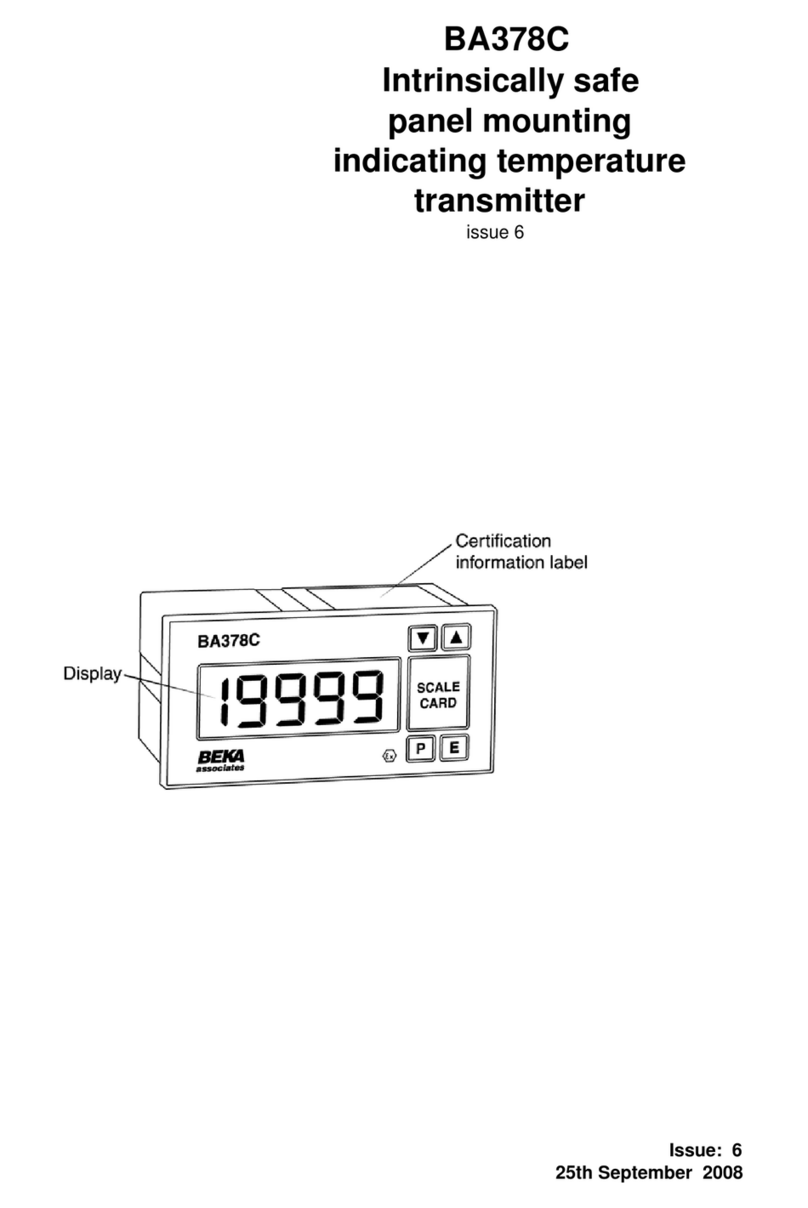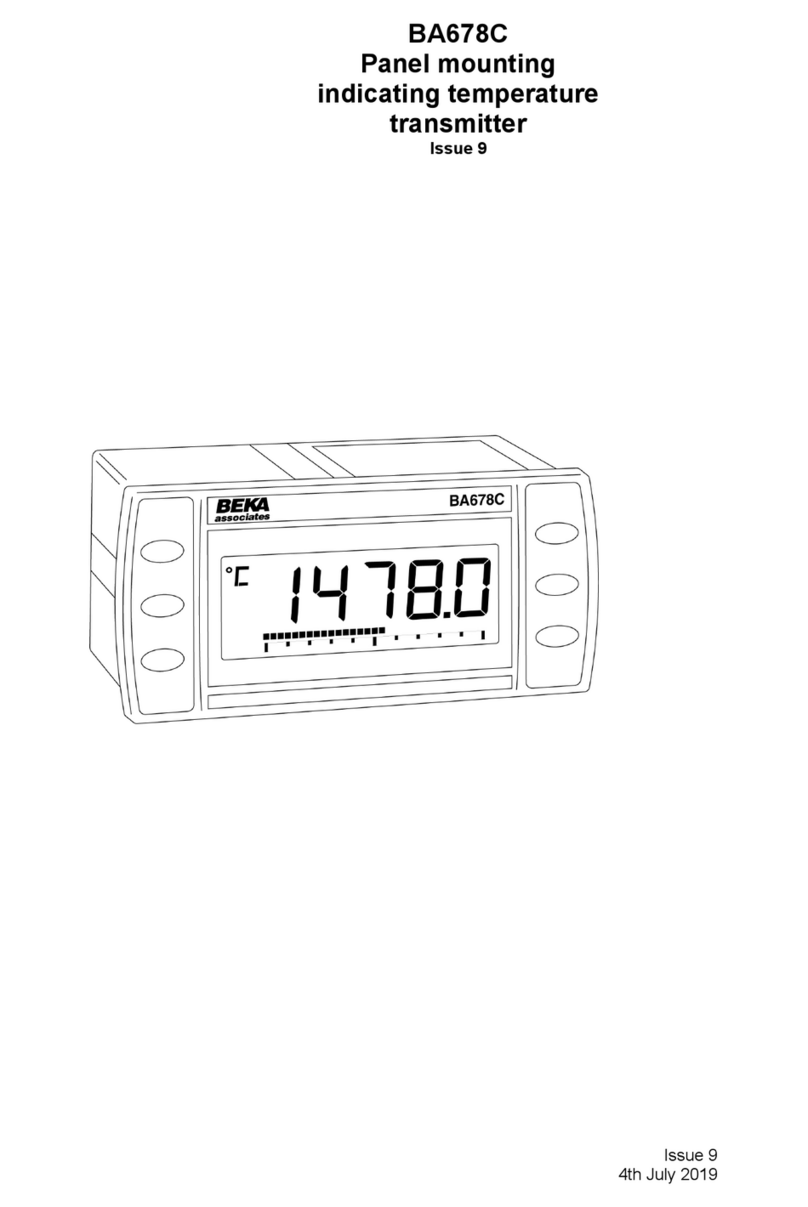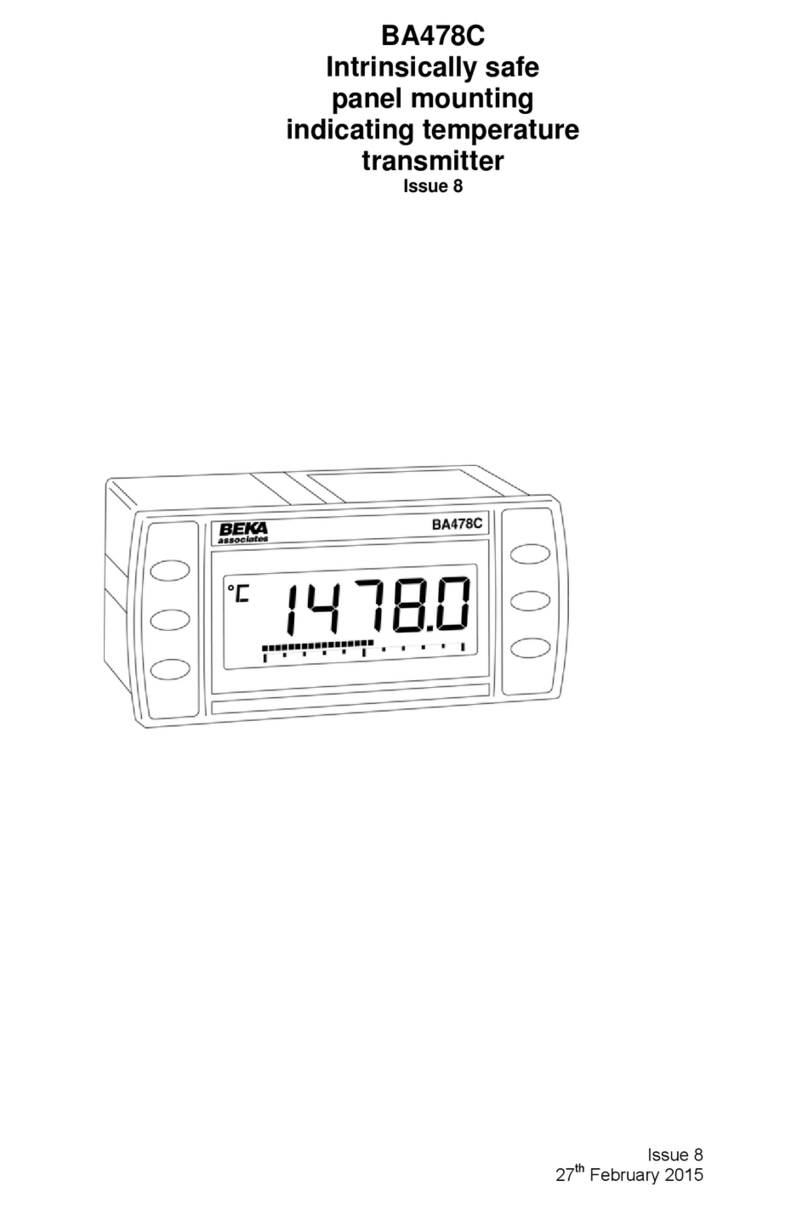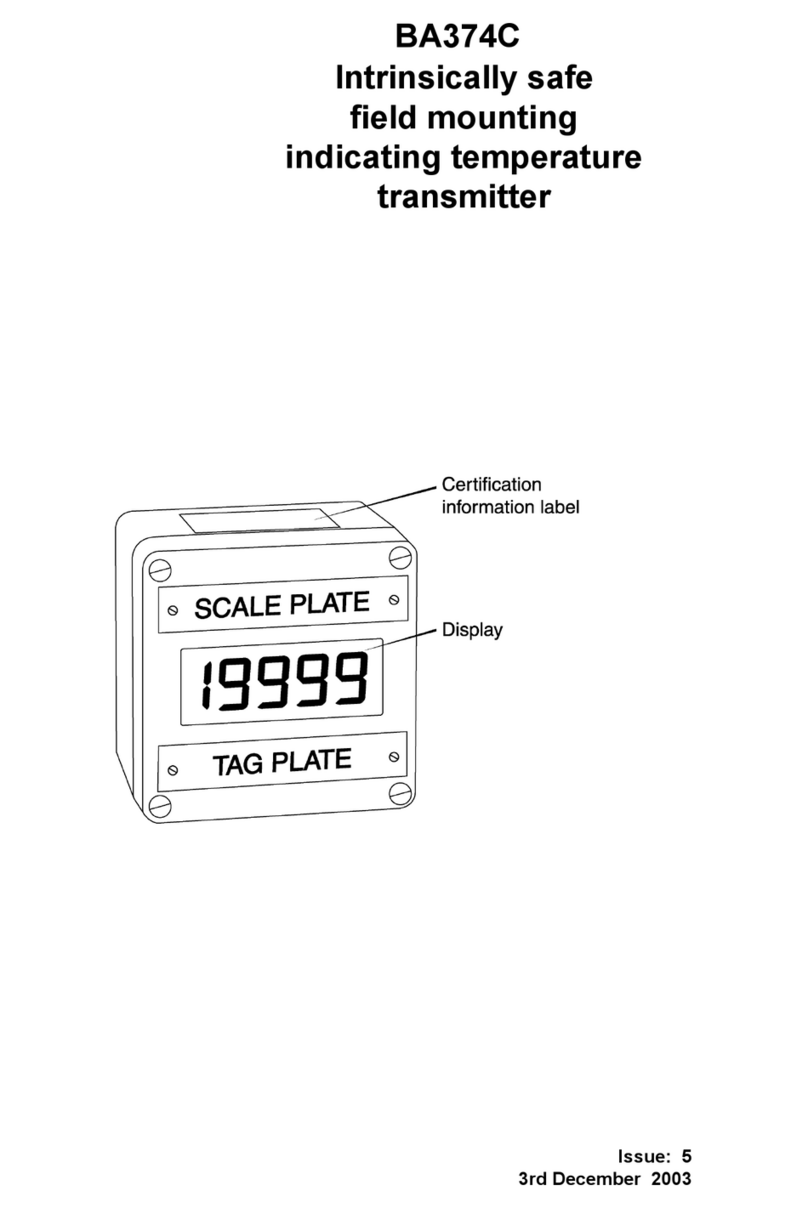
Pressing Pagain will enable the security code to be
entered digit by digit using the Up and Down
buttons to change the flashing digit, and the Ppush-
button to move to the next digit. If the correct
code is entered pressing Ewill cause the first
parameter 'InPut' to be displayed. If an incorrect
code is entered, or no button is pressed for ten
seconds, the transmitter will automatically return to
the operating mode.
When the transmitter is in the Programme Menu the
4/20mA output current will remain locked at the
value prior to starting programming, the output will
therefore not respond to any input change.
However, calibration of the 4/20mA output via the
'CAL' function, or re-calibration of the 4/20mA
reference via the 'Cond' function will change the
output current.
Once within the Programme Menu the required
parameter can be reached by scrolling through the
functions using the Up and Down push-buttons as
shown in Figs 5A and 5B. When returning to the
display mode following changes to any parameters,
the transmitter will display four
decimal points for a few seconds while the new
information is stored in permanent memory.
All new BA574C indicators are supplied calibrated
as requested at the time of ordering. If calibration
is not requested, the transmitter will be set for 3
wire RTD input with 4 to 20mA output correspond-
ing to a display of 0.0oC to 100.0oC.
5.1 Summary of ProgrammeMenu functions
The parameters which may be programmed vary
depending upon which input is selected. For:
Thermocouple and resistance
thermometer inputs
The BA574C transmitter will always display
sensor temperature. Programming allows the
display to be in degrees Centigrade or Fahren-
heit, and for the display resolution to be
selected.
Zero and span of the 4/20mA output current
may be programmed to represent any display
range.
Voltage input
The display may be programmed to show the
input voltage in any engineering units.
Zero and span of the 4/20mA output current
may be independently programmed to repre-
sent any displayed value.
Each of the functions in the Programme Menu is
described in the following summary with a cross
reference to more detailed information. Figs 5A
and 5B illustrate the location of each function within
the menu.
Summary of ProgrammeMenu functions
Display Functions
'InPut' Transmitter input
Conditions the transmitter to accept
thermocouple'tHC', resistance
thermometer 'rtd' or a voltage 'UOLt'
input.
See section 5.2
For Thermocouple Inputs
'tYPE' Sensor type
Selects type of thermocouple input.
See section 5.3.1
'dEg' Units of display
Sets display to oC or oF.
See section 5.3.2
'rESn' Display resolution
Selects low or high display resolution.
See section 5.3.3
'CJC' Cold junction compensation
Turns thermocouple cold junction
compensation ON or OFF.
See section 5.3.4
'burn' Input open circuit drive
Selects up scale drive, down scale drive
or no drive when input is open circuit.
See section 5.3.5
For Resistance Thermometer Inputs
'tYPE' Sensor type
Selects 3-wire, 4-wire or differential
Pt100 resistance thermometer input.
See section 5.4.1
'dEg' Units of display
Sets display to oC or oF.
See section 5.4.2
'rESn' Display resolution
Selects low or high display resolution.
See section 5.4.3
8




































